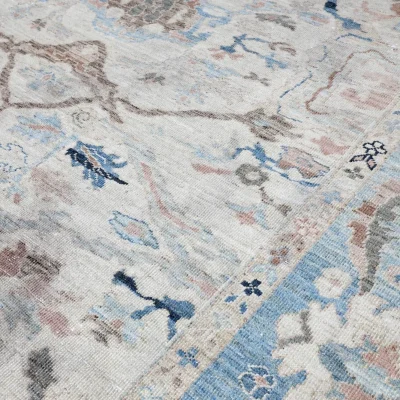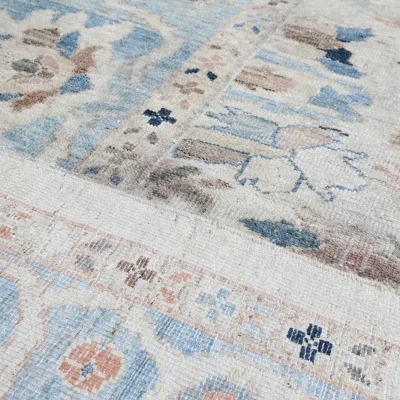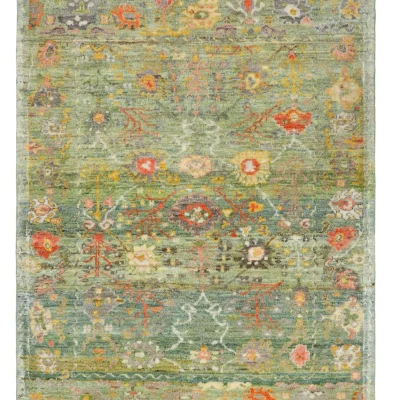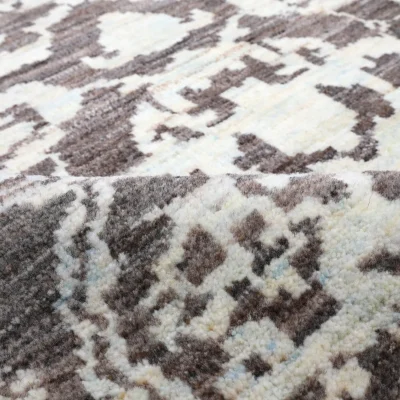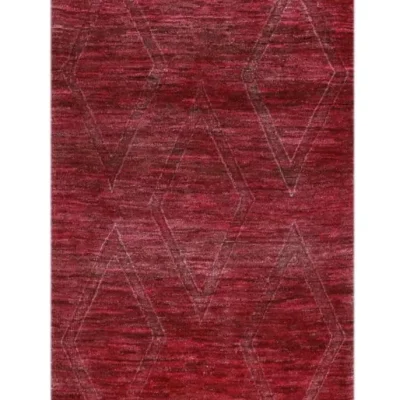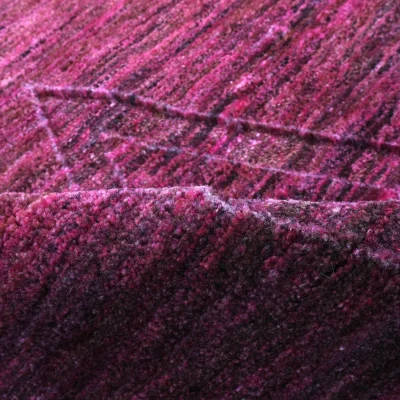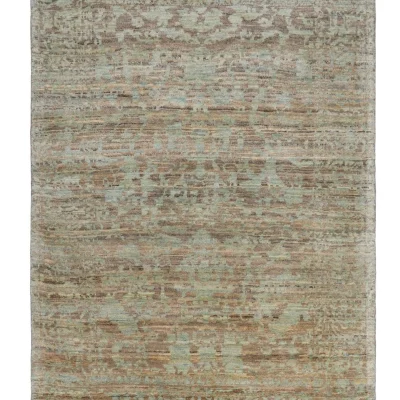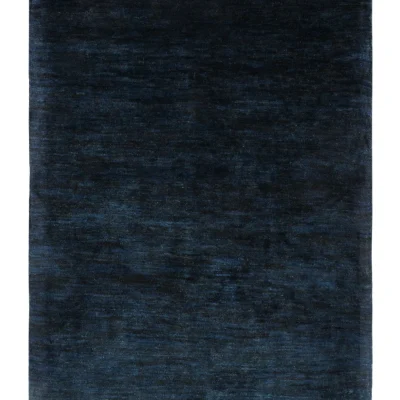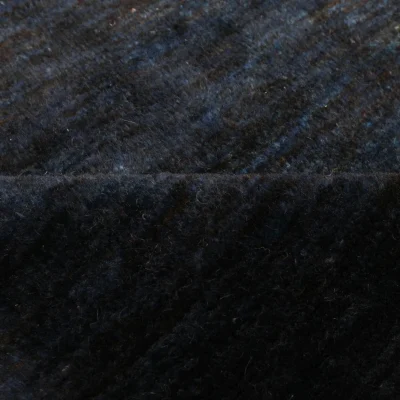The Features of Antique Look Rugs
Nowadays, life has become entangled with various modern methods and productions. It is natural to acknowledge that the pace of progress has reached such heights that we can no longer definitively say whether traditional methods and products are better or modern ones! Many people around the world are familiar with the unique features of authentic products, such as the indescribable feeling that comes from touching a handwoven rug or a silk and wool rug. These individuals, who find solace in nostalgic items, especially rugs, deserve to acquire a blend of traditional design and new technology. For these special customers, we recommend the Antique Look rug, which combines tradition and modernity and caters to both tastes. These rugs come in various patterns and colors that remind us of the authenticity of ancient Pazirik rugs. Classic motifs and designs are visible on these rugs, and the Antique Look rug can be considered a new design that rejuvenates our minds with youthful creativity.
The Type of Yarn in Antique Look Rugs
Our goal at Arsin Rug Gallery is to provide rugs of the highest quality and beauty to make your Iranian home more delightful. The Antique Look rug is made from hand-spun wool, apart from its unique design, which enhances the final quality of the rug and increases the delicacy and colorfastness of the yarn. It is interesting to know that the history of hand-spun wool in Iran is very ancient, and villagers and nomads were the first producers of this type of yarn from their own livestock. The way these yarns are twisted directly affects the final production, making the colors shine in the rug. This is an indication of better colorfastness in hand-spun rugs compared to machine-made ones.
[expand title=”More Details”]
Design of Antique Look Rugs
The uniqueness of traditional designs like Antique Look and Jooqeh Boteh is evident in the fact that these designs are used in special fashion shows, and they have essentially become a global representation of Iranian art. Extraordinary garments inspired by Iranian handwoven rugs have been produced for women and men, serving as a testament to your good taste in choosing the Antique Look rug.
In general, these rugs have various color spectrums, mostly composed of combinations that evoke a sense of antiquity and the antique nature of the rug. However, these rugs can also be ordered in warmer color schemes or with designs that attempt to create a representation of top-quality Antique Look rugs by disrupting the geometric principles of the rug and even its roots, bestowing historical significance upon them. Popular motifs and patterns found on nomadic kilims are another aspect that can be observed among Antique Look rugs.
The Role of Antique Look Handwoven Rugs in Decoration
In addition to Iranians, people all over the world have a special affinity for handwoven rugs. In fact, the diverse patterns and designs in handwoven rugs allow them to harmonize with any style of decoration. Regardless of your taste, one of the types of rugs such as Gabbeh, Jajim, or Kilim will surely attract your attention. Therefore, there is no need to worry because the variety in the colors and designs of these rugs is extensive. Furthermore, the importance of handwoven rugs in Iranian homes is significant because you can coordinate your home environment with one of the rug colors and gift the mesmerizing beauty to the eyes of your guests.
Purchasing Antique Persian Rugs for Your Home
Hand-woven rugs have their own special beauty due to their diverse patterns and designs, as well as the use of natural materials. The colors and sheen of these rugs captivate your gaze, to the point where you can’t get enough of admiring this artistic masterpiece. The significance of hand-woven rugs in Iranian homes has existed since the past, as having a rug is one of the essential requirements in Iranian households. Therefore, it is crucial to know where you are buying it from to have sufficient information about the age and value of the desired rug.
Prices of Antique Persian Rugs
In terms of price, these artistic rugs have different ranges, which vary based on the warp and weft, the number of knots, the pile height of each rug, and most importantly, the dimensions of the rug. The best approach is to visit Arsin Gallery and see various types of this art with your own eyes. According to your taste, choose the best design that matches your interior decor.
The Most Important Reasons for the High Quality of Persian Rugs
There are numerous reasons that contribute to the high quality of Persian rugs, and many factors are involved in achieving this quality.
Animal Husbandry
In rural and non-industrial areas, animal husbandry is still an integral part of people’s lives. One of the most important raw materials for producing hand-woven rugs is natural wool and silk. Iran is famous as one of the top-quality wool-producing countries in the world. However, in terms of production volume, it faces tough competitors. But in terms of the quality of wool produced in Iran, it is highly suitable for the rug industry. Makoui wool is one of these natural fibers used for hand-woven rugs and has many enthusiasts in Iran.
Authentic Designs
Undoubtedly, the birth certificate of Iranian hand-woven rugs is based on the high-cultural identity of their designs and motifs. The most popular designs worldwide are the patterns of Iranian hand-woven rugs. Even in other countries that produce hand-woven rugs, they mostly use Iranian designs for their products. This has led to Iranian designs being recognized as a brand and a reference worldwide. Iranian designs showcase the culture and authenticity of Iran in an exquisite artistic way.
Among the most famous Iranian patterns, we can mention the Shah Abbas flower and the ancient Iranian symbol, the “Boteh Jegheh,” which can be observed in various Islamic, fusion, and classic rug designs. Hunting patterns and mythical motifs are also among the most precious works of Iranian artists in the rug industry.
People’s Love and Passion
Iranians consider rug weaving as a culture, tradition, and fine art before considering it as an industry. Therefore, people from different regions of Iran weave rugs with love and passion. Each region has its own customs and techniques of rug weaving.
Special Weaving Techniques
Iranian weavers use special techniques and ancestral knowledge specific to each province and region for weaving rugs, rugs, and jajims. For example, the rugs produced in Tabriz have utilized a distinctive weaving technique compared to the rugs of Nain, Isfahan. Each of these techniques has its own unique advantages. For instance, the Turkish weaving technique provides strength and velvety texture to the rugs, while the two-ply or Farsi weaving technique emphasizes details and density as its main characteristics.
Master Craftsmen
Iranian rug weavers and artists are famous worldwide for their mastery of the art of handwoven rugs. The innovation, combined techniques, and secrets of weaving by these master craftsmen have made Iranian rugs renowned throughout the world.
Tips for Maintaining Iranian Rugs and Antique Rugs
Antique rugs hold great value and significance in Iranian homes, and purchasing this type of rug often adds a modern and attractive touch to your living space. Therefore, it is important to take care of them and keep certain tips in mind.
- Try to vacuum the rug daily and keep it tidy, as the presence of pests can damage and harm handwoven rugs. It’s good to know that you can use naphthalene to prevent pests. If a part of the rug becomes infested, make sure to address it promptly to prevent further damage.
- One important aspect to remember about these rugs is cleaning. Handwoven rugs should not be washed because, as mentioned earlier, their value lies in their age and wear. With extensive use, they become more beautifully colored.
- It’s recommended to rotate the rug every 6 months to prevent excessive wear in one area.
- Avoid placing the rug in an area where direct sunlight hits it.
- Many people have a habit of sticking rug tapes together, but never do this with handwoven rugs.
- Ensure that the rug is spread in a way that the legs of furniture, especially steel furniture, do not rest on it, as it can cause indentations in the rug.
Every Corner of Iran; A Handwoven Rug
Handwoven rugs in Iranian homes are a symbol of artistic craftsmanship that has been recorded throughout history. The origin of the first rugs can be traced back to the Medes and Persians, and they have a long history. Interestingly, in the past, rug weavers used to create beautiful rugs with captivating patterns to welcome kings in different periods. Some rugs, according to the direct orders of the Qajar kings, were woven with intricate patterns and the names of past kings and future heirs were inscribed on them.
Apart from the glorious history of rugs in ancient Iran, rug weaving can be seen in every region of the country. Various ethnic groups, with their own unique cultures, have woven different types of handwoven rugs such as Baluchi rugs, Qom rugs, Kashan rugs, and more. The woven patterns and designs on each rug are unique to the respective ethnic group and possess their own special beauty.
Each handwoven rug in different regions of Iran has its own distinct features. Tabriz rugs, for example, are known for their durability and velvet-like pile. Isfahan rugs are renowned for their high craftsmanship and fine, intricate designs. Qom rugs are highly regarded for their vibrant colors, luster, and softness. Rugs produced in other provinces such as Kashan, Hamedan, Bandar Torkaman, Zanjan, and Urmia are also of high quality and feature rich patterns and designs. All of these rugs, combined with modernity, become antique rugs that you can use to enhance your home decor and showcase your living space attractively.
Important Tips for Identifying Antique Loom Rugs
To have a good experience when purchasing an antique loom rug, it is important to be aware of the characteristics of Iranian handwoven rugs. In doing so, you can make an exceptional investment and enjoy its beauty.
Color Testing for Handwoven Rugs
When buying Iranian handwoven rugs, ensure that the colors used in their production are natural. You can also test the colorfastness by rubbing a damp cloth on the pattern of the rug. Rugs that show color bleeding have lower color quality.
Density of Iranian Handwoven Rugs
One of the most important factors to consider when assessing the value of a handwoven rug is its density and knot count. By counting the knots on the backside of the rug, you can calculate the density and number of knots per square inch.
Correct Weaving Technique for Handwoven Rugs
Since handwoven rugs are made manually, there is a possibility of errors or mistakes in some knots. Carefully inspect different parts of the rug, especially the detailed areas. Rugs with fewer weaving errors will have higher value and authenticity.
[/expand]

